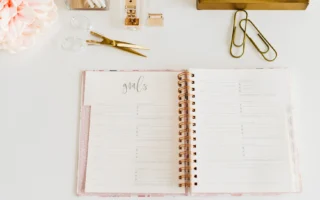A Guide to Safeguarding Your Well-Being
Life is a dance of connections, and relationships are at its heart. They can be a source of joy, support, and love. But, like any dance, there needs to be space between partners for it to truly work. The space we’re talking about is boundaries, those invisible lines that define where you end and where others begin. Setting and maintaining healthy boundaries is essential for safeguarding your emotional and mental well-being. It’s not about building walls; it’s about creating space for respect, understanding, and self-preservation.
Why Boundaries Matter:
You might be someone who’s always been selfless, putting others’ needs ahead of your own. While that’s a noble trait, it can lead to emotional exhaustion and a sense of losing oneself. The truth is, boundaries are not selfish. They’re a form of self-respect. They allow you to define your limits, protect your well-being, and maintain healthier relationships. Here’s why they matter:
- Preserving Your Energy: Setting boundaries ensures you’re not constantly giving, leaving you drained. It’s like preserving your energy for what truly matters.
- Respect and Mutual Understanding: Boundaries are the framework for respecting yourself and others. They help prevent misunderstandings and conflicts in relationships.
- Emotional Well-Being: When you define your limits, you protect your emotional health, reducing stress and anxiety.
- Maintaining Identity: Boundaries remind you of your own identity and needs. They help you stay true to yourself, even in the midst of relationships.
Recognizing Unhealthy Patterns:
The first step in setting boundaries is recognizing when you need them. Take a moment to reflect on situations where you’ve felt uncomfortable or taken advantage of. Was it because you didn’t express your needs or because someone overstepped your limits? Identifying these moments is crucial in learning to set boundaries.
Setting Your Boundaries:
- Know Your Limits: Self-awareness is key. Understand what makes you comfortable or uncomfortable in a relationship. What are your emotional and physical limits?
- Express Clearly: Communicate your boundaries honestly but respectfully. Use “I” statements, like “I need some personal space” rather than “You’re smothering me.”
- Consistency is Key: Setting boundaries isn’t a one-time thing. You must consistently enforce them. People may test your limits, but your consistency shows you mean what you say.
- Be Open to Negotiation: In some cases, boundaries can be flexible. Be open to negotiation while staying true to your core needs.
- Listen to Your Gut: If something doesn’t feel right, trust your instincts. Boundaries are there to protect you, so don’t ignore red flags.
Homework:
Your homework is to reflect on your current relationships. Identify moments when you felt uncomfortable or when your boundaries were crossed. Then, practice setting boundaries with one person in your life, perhaps a friend, family member, a colleague, or partner. Observe how this makes you feel and how it impacts the relationship.
“Daring to set boundaries is about having the courage to love ourselves even when we risk disappointing others.” – Brené Brown
Boundaries are not barriers; they’re bridges to healthier, happier relationships. They’re the lines that remind you that your well-being matters. By setting and maintaining boundaries, you are safeguarding your emotional and mental health while fostering understanding and respect within your relationships. Remember, it’s not selfish to put yourself first; it’s self-love, and that’s a beautiful thing.









